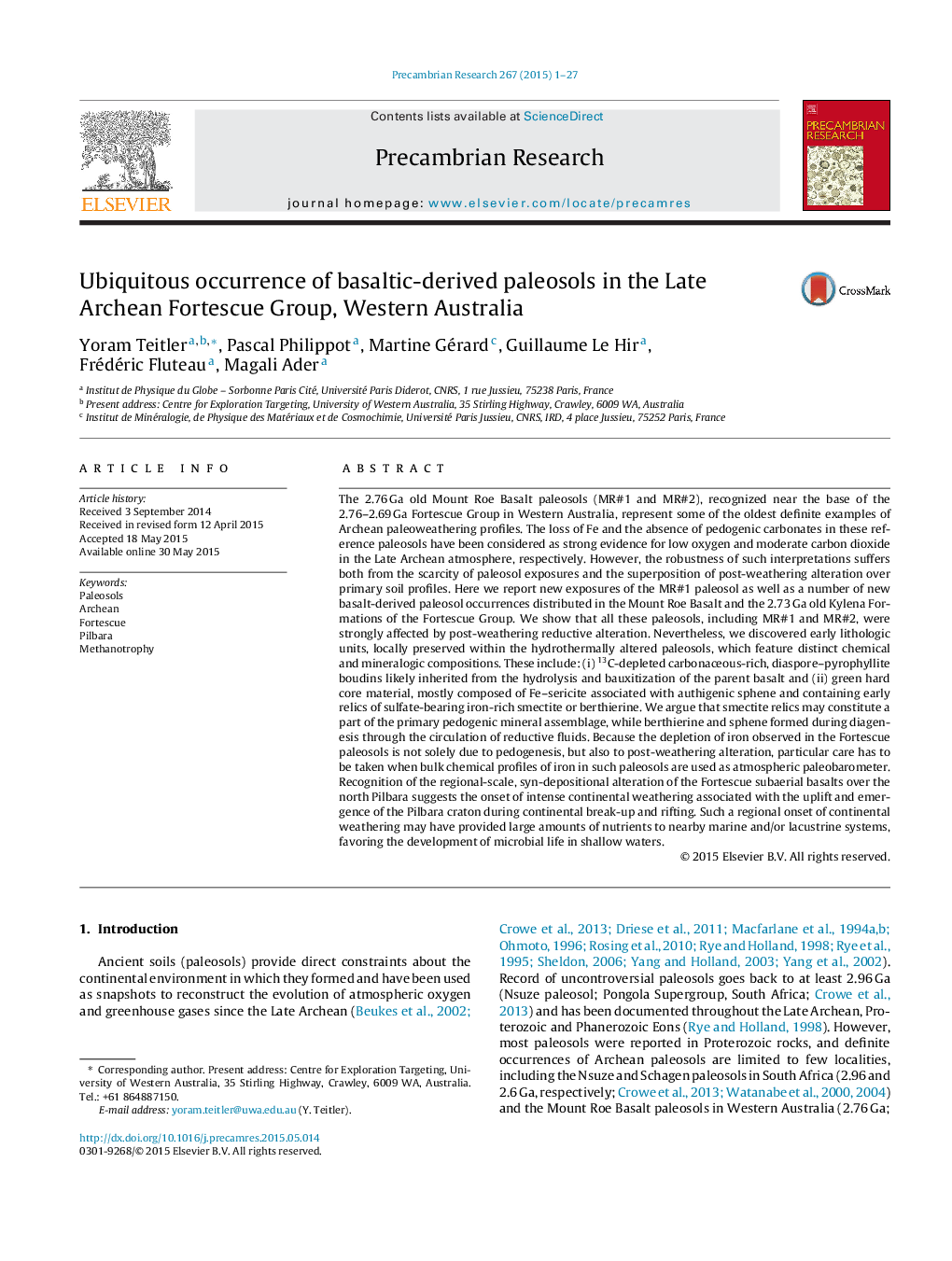| کد مقاله | کد نشریه | سال انتشار | مقاله انگلیسی | نسخه تمام متن |
|---|---|---|---|---|
| 4722604 | 1639608 | 2015 | 27 صفحه PDF | دانلود رایگان |

• Regional-scale weathering of the 2.76–2.73 Ga Fortescue basalts.
• Local occurrences of early weathering-related mineral relics.
• Evidence for significant O2 in the Late Archean atmosphere.
The 2.76 Ga old Mount Roe Basalt paleosols (MR#1 and MR#2), recognized near the base of the 2.76–2.69 Ga Fortescue Group in Western Australia, represent some of the oldest definite examples of Archean paleoweathering profiles. The loss of Fe and the absence of pedogenic carbonates in these reference paleosols have been considered as strong evidence for low oxygen and moderate carbon dioxide in the Late Archean atmosphere, respectively. However, the robustness of such interpretations suffers both from the scarcity of paleosol exposures and the superposition of post-weathering alteration over primary soil profiles. Here we report new exposures of the MR#1 paleosol as well as a number of new basalt-derived paleosol occurrences distributed in the Mount Roe Basalt and the 2.73 Ga old Kylena Formations of the Fortescue Group. We show that all these paleosols, including MR#1 and MR#2, were strongly affected by post-weathering reductive alteration. Nevertheless, we discovered early lithologic units, locally preserved within the hydrothermally altered paleosols, which feature distinct chemical and mineralogic compositions. These include: (i) 13C-depleted carbonaceous-rich, diaspore–pyrophyllite boudins likely inherited from the hydrolysis and bauxitization of the parent basalt and (ii) green hard core material, mostly composed of Fe–sericite associated with authigenic sphene and containing early relics of sulfate-bearing iron-rich smectite or berthierine. We argue that smectite relics may constitute a part of the primary pedogenic mineral assemblage, while berthierine and sphene formed during diagenesis through the circulation of reductive fluids. Because the depletion of iron observed in the Fortescue paleosols is not solely due to pedogenesis, but also to post-weathering alteration, particular care has to be taken when bulk chemical profiles of iron in such paleosols are used as atmospheric paleobarometer. Recognition of the regional-scale, syn-depositional alteration of the Fortescue subaerial basalts over the north Pilbara suggests the onset of intense continental weathering associated with the uplift and emergence of the Pilbara craton during continental break-up and rifting. Such a regional onset of continental weathering may have provided large amounts of nutrients to nearby marine and/or lacustrine systems, favoring the development of microbial life in shallow waters.
Journal: Precambrian Research - Volume 267, September 2015, Pages 1–27